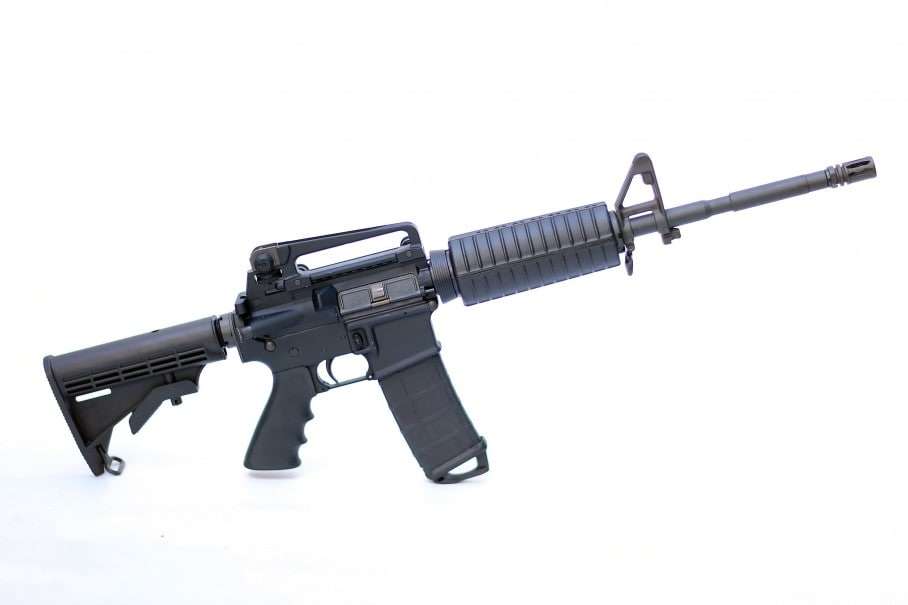The Volokh Conspiracy
Mostly law professors | Sometimes contrarian | Often libertarian | Always independent
Why bans on so-called 'assault weapons' are unlikely to reduce mass shooting deaths

Lots of people have been calling for bans on so-called "assault weapons," often arguing that such bans would reduce mass shooting deaths. But I doubt this would work, because, despite the name, "assault weapons" are no deadlier than other weapons.
1. To begin with, note that assault weapons are not fully automatic weapons (which is to say machine guns). Fully automatic weapons have long been heavily regulated, and lawfully owned fully automatics are very rare, very expensive and almost never used in crimes. Rather, assault weapons are a subset of semiautomatic weapons, generally semiautomatic handguns and rifles.
2. Semiautomatic handguns and rifles - of which there are probably at least about 100 million in the country, and likely more - are undoubtedly extremely deadly; but the subset that is labeled "assault weapons" is not materially deadlier than the others. One way of recognizing that is looking at the definition in the 1994-2004 federal assault weapons ban; the ban lists several types of guns by name, and then provides these generic definitions:
(B) a semiautomatic rifle that has an ability to accept a detachable magazine and has at least 2 of-
(i) a folding or telescoping stock;
(ii) a pistol grip that protrudes conspicuously beneath the action of the weapon;
(iii) a bayonet mount;
(iv) a flash suppressor or threaded barrel designed to accommodate a flash suppressor; and
(v) a grenade launcher;
(C) a semiautomatic pistol that has an ability to accept a detachable magazine and has at least 2 of-
(i) an ammunition magazine that attaches to the pistol outside of the pistol grip;
(ii) a threaded barrel capable of accepting a barrel extender, flash suppressor, forward handgrip, or silencer;
(iii) a shroud that is attached to, or partially or completely encircles, the barrel and that permits the shooter to hold the firearm with the nontrigger hand without being burned;
(iv) a manufactured weight of 50 ounces or more when the pistol is unloaded; and
(v) a semiautomatic version of an automatic firearm ….
As you might gather, bayonet mounts, barrel shrouds, pistol grips and the like don't make guns materially more lethal. A grenade launcher might, but grenades themselves are already extremely heavily regulated, and in any event, rifles with grenade launchers aren't relevant to mass shootings or, to my knowledge, crime generally. Guns that fit these categories may look more dangerous; but they aren't more dangerous.
3. What makes a gun deadlier? Longer barrels do, since they give the bullet more time to accelerate; that's why rifles are deadlier than handguns, all else being equal. Accuracy does, but (for obvious reasons) no one is trying to ban guns that are especially accurate, at least setting aside possible arguments related to high-end sniper rifles.
Caliber does, because wider bullets are generally heavier bullets, but assault weapons aren't defined by caliber size. The amount of gunpowder (and possibly some other attributes of the gunpowder) in a round does, because that too affects muzzle velocity, but assault weapons aren't defined by this. For instance, the .223 rifles that are often labeled "assault weapons" have a much lower muzzle energy than familiar hunting rifles such as the .30-06. The type of bullet might matter (for instance, hollow points used in handguns tend to be deadlier but also are more effective for lawful self-defense, since they tend to stop the attacker more reliably), but that too isn't a function of whether the gun is an "assault weapon."
The ability to fire relatively quickly used to matter, centuries ago when early weapons took many seconds to reload, but these days pretty much all semiautomatics and revolvers (and even other guns) fire quickly enough for any criminal's needs; and again assault weapons aren't defined by rate of fire. Indeed, if you're trying to hit what you're aiming at, you need to take time to aim again after every shot, since the recoil will have moved the barrel.
Magazine size might matter, though I suspect it matters little given the ease of replacing a magazine (true for all semiautomatics, and to a lesser extent even for many revolvers) - for more on magazine size limits, see this August 2012 post. But in any event, high-capacity magazines can fit many guns that aren't "assault weapons." Banning assault weapons as such would thus have basically no effect on the lethality of gun crime, or of mass shootings more specifically.
4. For more on all this, see Prof. Gary Kleck's "Targeting Guns" (pp. 110-118). Kleck is a very serious gun policy scholar; though he has generally come to be skeptical of gun control, he is highly respected, and the book on which "Targeting Gun"s is based - Kleck's earlier "Point Blank" - won the American Society of Criminology's Hindelang Award in 1993 for being the "book, published within three (3) calendar years preceding the year in which the award is made, that makes the most outstanding contribution to research in criminology."
If I'm right on this, then banning assault weapons is likely to have as little effect on mass shootings as banning whiskey would have on drunken driving. Even if we concluded that drunk drivers were disproportionately drunk on whiskey, banning whiskey would just mean that the drunk drivers will shift to vodka, gin, tequila or other alcoholic beverages that are just as dangerous as whiskey. The same is true for the so-called "assault weapons."


Show Comments (0)